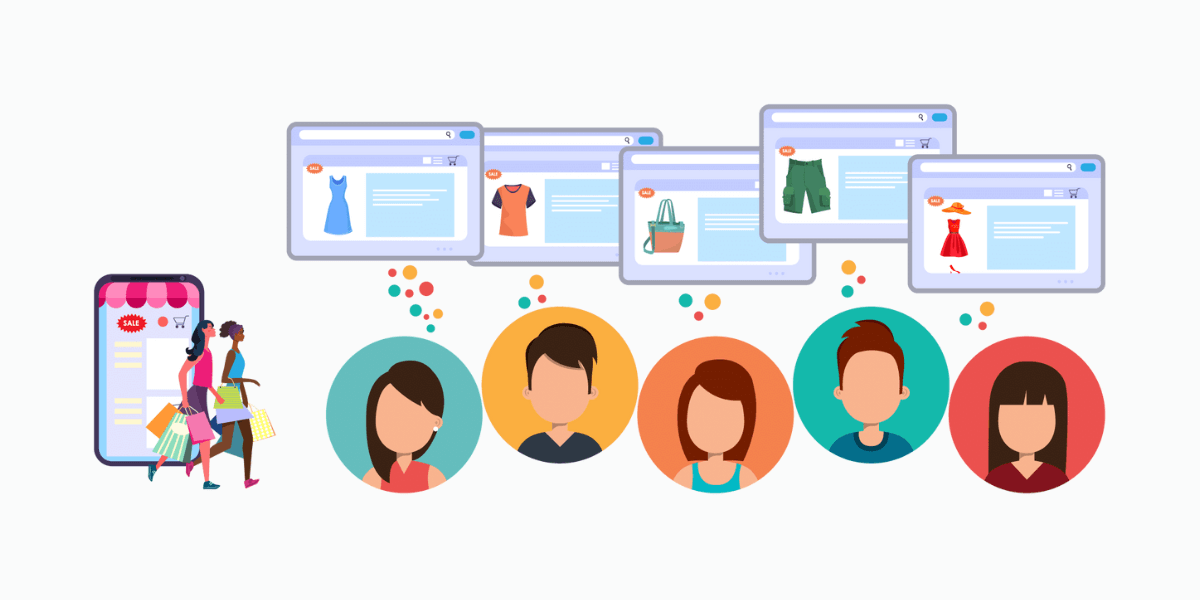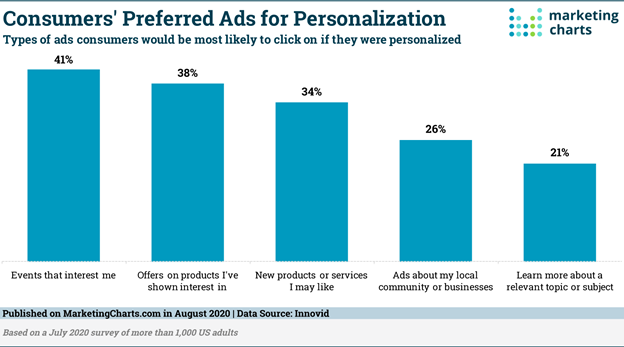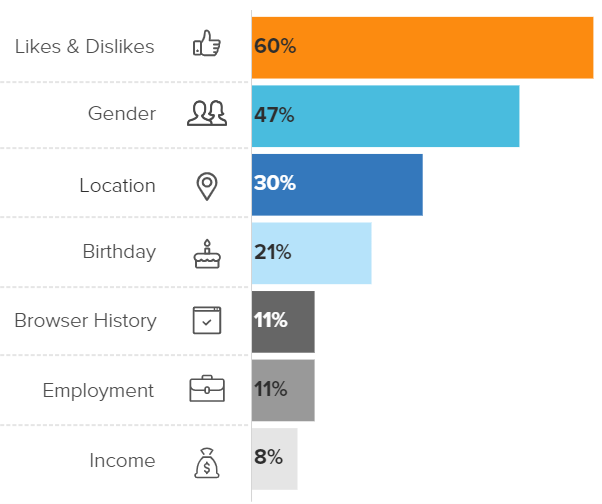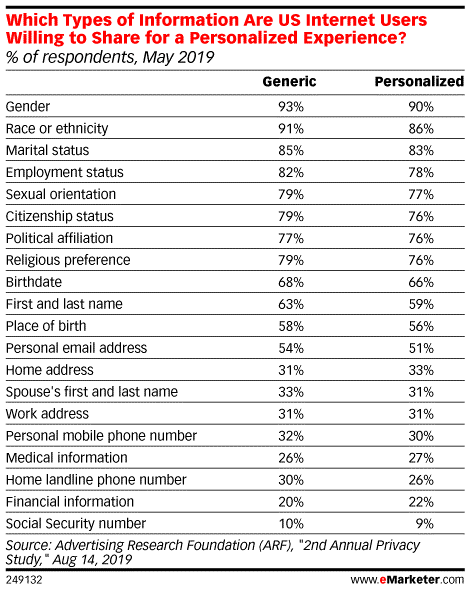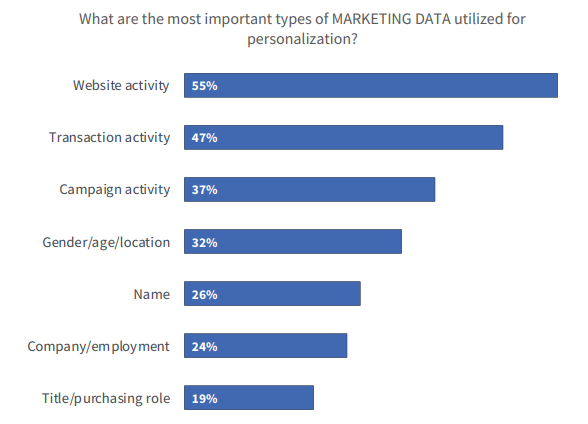Personalization has transformed marketing strategies, and today’s consumers want personalized experiences in their interactions with brands.
To provide the personalized experiences that consumers seek, it’s important to balance data and technology to understand them and communicate with messages they are likely to engage with. However, if personalization strategies are not used well, your brand might fail to show customers you care or, conversely, appear too intrusive by knowing too much about them.
So what types of personalization are consumers looking for and how effective are personalization techniques?
Key Highlights: Personalized Experiences
- High Demand for Personalization: Most consumers expect personalized experiences from brands, and this preference influences purchase decisions and brand loyalty.
- Effectiveness of Personalized Ads: Consumers are more likely to engage with personalized ads, especially if they align with their interests, demographics, and online behavior.
- Preferred Personalization Channels: Social media, video, and TV ads are popular channels where consumers prefer personalized content.
- Data Sharing Preferences: Many consumers are willing to share personal data in exchange for relevant and personalized experiences, but they want transparency and control over data collection.
- Covid-19 Impact: The pandemic has reshaped consumer preferences, necessitating more context-sensitive and empathetic personalization strategies.
The Power of Personalization
You may have seen the statistics, but the power of personalization never fails to impress. Check out this array of statistics from various research studies across the web:
- 71% of consumers feel frustrated when a shopping experience is impersonal. – Segment
- 70% of millennials are frustrated with brands sending irrelevant emails. – SmarterHQ
- 74% of customers feel frustrated when website content is not personalized. – Instapage
- 47% of consumers check Amazon if the brand they’re shopping with doesn’t provide product suggestions that are relevant. – SmarterHQ
- 36% of consumers say retailers need to do more to offer personalized experiences. – Retail TouchPoints
- 91% of consumers say they are more likely to shop with brands that provide offers and recommendations that are relevant to them. – Accenture
- 80% of consumers are more likely to make a purchase from a brand that provides personalized experiences. – Epsilon
- 90% of U.S. consumers find marketing personalization very or somewhat appealing. – Statista
- 72% of consumers say they only engage with personalized messaging. – SmarterHQ
- 80% of frequent shoppers only shop with brands that personalize the experience. – SmarterHQ
- 56% of online shoppers are more likely to return to a website that recommends products. – Invesp
- 63% of consumers will stop buying from brands that use poor personalization tactics. – Smart Insights
- 66% of consumers say encountering content that isn’t personalized would stop them from making a purchase. – CMO by Adobe
- 42% of consumers are annoyed when content isn’t personalized. – CMO by Adobe
- More than 50% of consumers are willing to share information on products they like in order to get personalized discounts. – Retail TouchPoints
- 83% of consumers are willing to share their data to create a more a personalized experience. – Accenture
In recent research from Innovid, 40% of consumers have made a purchase in 2020 as a direct result of a personalized ad. Respondents said they were more likely to click on a number of ad types if they were personalized:
- 41% are more likely to click on personalized ads for events that interest them
- 38% will click o personalized ads for products they’ve shown interest in
- 34% will click on ads for new products or services they may like
Additionally, 32% of consumers like personalized ads, but 3 in 10 like brands more when they personalize ads. A further 43% of respondents agree that it’s important that ads are personalized.
Consumers value context in their personalized ads. About 4 in 10 (39%) prefer ads that relate to the current context, like the website they are visiting. Additionally, 3 in 10 (31%) like ads tailored to their demographics, while 29% want to see ads that reflect their online behavior and preferences.
Consumers are most receptive to personalized ads in retail.
Channels consumers prefer to see personalization in include:
- 18% – Social ads
- 17% – Video
- 17% – TV
- 13% – Banner ads
When it comes to sharing personal information, 23% of consumers stated they are more willing to share their information with brands than they were 1-2 years ago. In fact, consumers are most willing to share their personal information to receive ads that are more relevant based on:
What can brands do to make consumers feel more comfortable sharing their data? 35% of consumers stated they would like to dictate data collection preferences and 12% want brands to share their official data collection policy.
In a recent survey by the Advertising Research Foundation, 93% of respondents said they would be willing to share their gender with a website, but that dropped to 90% if it meant the data was used to create a personalized experience.
Approximately 91% said they would share their race or ethnicity, but that dropped to 86% for a personalized experience.
Types of Data Marketers are Using to Support Personalization Efforts
In research by Ascend, over half (55%) of marketing influencers say that website activity is the most important type of marketing data utilized for personalization efforts. Transaction activity is also at the top of the list of important types of data to 47% of those marketers surveyed.
In another recent study by Monetate conducted across the retail, travel and hospitality, and insurance industries, the types of data used by marketers for their personalization strategies were similar, with digital sources being the top formats used to support personalization efforts.
All three industries surveyed report similar usage of email activity and website behavioral data. Purchase history was also very important, with retailers leading at 94%.
Personalization During Covid-19
Personalization tactics were more straight-forward prior to Covid-19.
While the same tactics haven’t changed such as techniques based on past purchase history or browsing preferences, consumers are looking for additional types of personalization that takes into account the current economic climate.
Brands need to be relevant, useful and in context with your customer’s situation and needs. Re-examine your customer segments and personas. For example, did your pre-Covid segments assume older generations did not purchase on social media? Look again because much of this is changing. Or perhaps based on past purchase history, “back in stock” notifications would be appreciated.
Ensure you are investing in personalization strategies for the long-term and are positioning your brands to take advantage of new opportunities.
The Role of Artificial Intelligence in Personalization
Artificial Intelligence (AI) has revolutionized personalization by enabling brands to deliver tailored experiences at scale.
AI-powered algorithms analyze vast amounts of customer data, identifying patterns in behavior, preferences, and buying habits. This allows companies to segment audiences dynamically, predict customer needs, and provide relevant recommendations in real-time. Machine learning, a subset of AI, further refines this personalization by continuously learning from new data, helping brands respond swiftly to changing customer expectations.
AI-driven personalization can be applied across various touchpoints, from personalized product recommendations on e-commerce sites to dynamic pricing and content recommendations.
For example: Chatbots, use AI to engage customers in personalized conversations, answer questions, and guide users through products or services. By enhancing responsiveness and relevance, AI ensures a more engaging, seamless customer journey, building brand loyalty and increasing conversions.
How to Measure the Impact of Personalization
To evaluate the effectiveness of personalization efforts, brands must track and analyze specific metrics. Here are key metrics to consider:
- Engagement Rates: Measure increases in clicks, time spent on site, and page views to assess whether personalized content resonates with users.
- Conversion Rates: Track the percentage of users who take a desired action, such as purchasing a product, after encountering personalized content.
- Customer Retention: Determine if personalized experiences improve customer loyalty and reduce churn by monitoring repeat visits and purchases.
- Average Order Value (AOV): Assess whether personalization leads to higher spending per transaction, indicating more effective cross-selling or upselling.
- Customer Satisfaction Scores (CSAT): Collect direct feedback through surveys to understand how customers perceive the personalization they experience.
These metrics offer insights into how well personalization strategies drive engagement and business growth. Using analytics tools to track these KPIs helps brands continuously refine and improve their personalization efforts, optimizing resources to achieve the best results.
Personalization Ethics and Privacy
While personalization has clear benefits for both brands and consumers, it raises important ethical and privacy concerns. Today’s customers are increasingly aware of how their data is used, and they expect brands to handle it responsibly. Here’s how brands can maintain trust and transparency:
- Data Transparency: Inform customers about what data is collected and how it will be used. Clear, accessible privacy policies foster transparency and build trust.
- Consent and Control: Always ask for customer consent before gathering data, especially for sensitive information. Allow users to control their data preferences, including options to opt-out of specific personalization.
- Compliance with Regulations: Adhere to data protection laws like GDPR and CCPA, which enforce strict guidelines on data collection and processing. These regulations aim to protect user privacy and limit data misuse.
- Avoiding Intrusiveness: While personalization should enhance the user experience, being overly specific or tracking too much detail can come across as intrusive. Strive to balance relevance with respect for user boundaries.
Wrapping Up
Personalization has become a key part of any effective digital marketing, allowing brands to connect with consumers on a deeper level.
However, achieving meaningful personalization requires more than just technology; it requires a nuanced approach that respects user preferences and data privacy. By choosing a balanced personalization strategy that aligns with evolving consumer expectations and incorporates ethical data practices, brands can foster loyalty and improve customer satisfaction.
As the digital market continues to shift, brands that prioritize thoughtful personalization will be well-positioned to capture the attention and loyalty of today’s consumers.
For more great information, download our Customer Experiences Success Kit. The Success Kit to Skyrocket Your Customer Experiences gives you access to some of our most informative resources on customer experience marketing trends, strategies and tactics. The most convenient way to research, this success kit contains topic focused blogs, webinars, white papers, case studies and more – all with one download.
